20/3/2020 Greater Prairie-ChickensWhen I was invited to speak at the North American Bluebird Society conference in Kearney, Nebraska, last week, we were lucky to have a generous friend arrange to take us out to see a Greater Prairie-Chicken lek. Prairie Chickens have been on my bucket list for many years.
Greater Prairie-Chickens once inhabited the sweeping grasslands of North America, including the prairie regions of Alberta and Saskatchewan. However, their range has been greatly reduced, thanks to habitat loss, hunting and competition from the introduced Ring-necked Pheasant. They are now found only in a few American states. We arrived at the lek, located on a small hilltop in a large native pasture, just before dawn. We sat quietly in the inky cold, awaiting the arrival of the males. We were first alerted that the show was about to begin by a sound - the ethereal cooing call of the first arriving male. He was joined by another dozen or so other males and we were soon surrounded by mournful-sounding balladeers. https://www.allaboutbirds.org/guide/Greater_Prairie-Chicken/sounds The birds materialized as the darkness slowly faded and we were, for the next couple of hours, treated to an amazing sight. Our guide explained that the females would not likely put in an appearance for another couple of weeks, so it was a treat to have one show up, just before the sun's first rays kissed the hill. Her presence threw the males into paroxysms of dance but she, apparently finding no suitors to her liking, soon scurried away over the far hill. As the sun came up on this perfect Nebraska spring morning, we enjoyed a spectacle of colour, activity and sound. I was quite amazed at how different their dance moves are from Sharp-tailed Grouse (which are still found, albeit in declining numbers, in Alberta) and it was apparent that these birds inspired the famed Indigenous chicken dances. Like all lek species, male Prairie-Chickens defend a small territory on the dancing ground. To demonstrate their prowess, they extend their orange eye combs, lower their heads, raise their neck feather tufts (called pinnae) to reveal bright orange air sacs that create a booming sound, stamp their feet, click their tails and shake their wings. They divide their time between looking around and fighting with each other. Their sparring alternates between stand offs, chasing each other and - on occasion - leaping into the air to do battle with wings, feet and bills, They also perform flutter jumps, leaping into the air while flapping their wings and issuing loud vocalizations. It was a challenge to photograph them performing these spontaneous jumps! Our guide advised us that it is usually only one male that mates with all the visiting females - he with the most experience, the most impressive eye combs, longest legs, and best territories (nearest the center of the lek). As with all grouse species, no pair bond is formed and the males play no further role with the family. We left the blind - hearts filled with joy - after the warm morning sun melted the frost and the males had wandered off to feed for the day. What a privilege it was to bear witness to this marvel of nature. 27/10/2019 Back Blogging Again!It has been far too long since I'd updated this website and updated my blog. If you want to follow me, I do update my Facebook page on a regular basis. We made a trip to Edmonton last week - to check the 3rd (!) printing of Backyard Bird Feeding: An Alberta Guide. While there, we slipped up to St. Albert to try to catch a glimpse of the Ash-throated Flycatcher that has been seen at Lois Hole Provincial Park. Well, the bird was a no show (it hasn't been seen for a couple days) but we were greatly entertained by the local chickadees!
25/10/2018 Prickly PorcupinesI have always had a soft spot in my heart for porcupines. I remember my parents being upset when a porcupine decided to chew on the outhouse seats, and I have had the occasional nasty task of pulling quills from the muzzle of our family dog. But it is always a treat to encounter this prickly rodents, and it is always a treat to be able to get some photos.
Last week, while hiking on a natural area near Endiang, we encountered this young porcupine ambling down the trail towards us. My friend circled around to encourage it to continue walking my way so I could take some photos. The tall grass made it difficult to get a clear shot, but I was happy with this image. I will post more images later. 15/9/2018 Grouse Encounters A newly hatched grouse chick is called a cheeper. A newly hatched grouse chick is called a cheeper. Over the years, I’ve had several encounters with Ruffed Grouse, the most common and widespread grouse species in Alberta. On winter rambles, I’ve come upon the plunge holes where they have spent a cold winter’s night snug under the snow. Last winter, we were delighted to have two resident grouse feed on the scattered seeds beneath the bird feeders and dine on the willow tree buds. In the spring, I’ve spent many an hour watching the males drum and, in early summer, have seen grouse families. Encountering a mother and her chicks is always a thrill. At first, a defensive mother tries to be intimidating (she raises her crest feathers, fluffs out her neck ruff, spreads her tail, makes threatening sounds and charges) but if that doesn’t work, she drops to the ground and freezes in place. A couple summers ago, I got my first-ever glimpse of newly hatched chicks (called cheepers). It is my opinion that they are the most adorable of all baby birds! My most recent encounter with a grouse was in early September, when a friend and I had the good fortune to spend a few days in the Nordegg area. While ambling through a mixed-wood forest area, we heard a grouse drumming. Male grouse will sometimes drum in the fall because the hours of daylight match those of spring, reactivating their hormones. It is thought that fall drumming may also serve as a territorial notice; a message to other males that the log/area has already been claimed and will be used again in the spring. This male was extremely tame, so we spent some interesting hours watching and photographing him. After about 10 minutes of drumming on a high log, he seemed to lose interest and wandered off. Just when we thought he had disappeared, he ambled across the path in front of us, nibbling away at small buds. It was remarkable how well camouflaged he was, his plumage perfectly matching that of the underbrush. He melted again into the trees, but just as we were about to leave the area, we heard him drumming again, this time from atop a steep ridge. We quietly made our way to this new spot and sat in awe a mere five metres away as he drummed every few minutes for the next half hour or so. He was obviously aware of our presence, as he would occasionally cast a glance our way. However, he must have considered us non-threatening because he continued to display. After snapping some images, we left him alone to boom his prowess to the other grouse in the valley. We hope to return in the spring to see if this very cooperative male survived the winter and is back on his log. I hope you enjoy a few grouse images that I've been able to collect over the years. 14/8/2018 Welcoming Wilma the Weasel I am always thrilled to be afforded the rare treat of encountering a weasel, especially if I have my camera with me. Encounters with weasels are infrequent, and— because these hyper-active, frenetic little mammals have large territories and bound around erratically—fleeting. Several years ago, I was privileged be able to observe a female Long-tailed Weasel transfer her babies across the yard at Ellis Bird Farm, moving them from some unknown (but obviously undesirable) location to a more upscale condo under the floor boards in the Grain Elevator. It was a warm early evening and the site was quiet; it was just the Ma weasel and me. I grabbed my camera, placed myself at a respectful distance, and proceeded to witness her make three journeys with her precious cargo gently but firmly clenched between her teeth. After she had them tucked in safely, she zipped around among the flower beds, peeking out occasionally to cast me a nasty stare. Alas, my camera system was and antiquated one, so I didn’t get many focused shots. But the experience was a memorable one. We also had a male Long-tailed Weasel make a brief appearance a couple years ago. I was only able to photograph him bounding away, which meant for a lousy photograph but enough of a view of his anatomy to confirm his gender. During the past weeks, we’ve been privileged to have another Long-tailed Weasel visit us at Ellis Bird Farm, appearing for brief moments at random spots around the site. I’ve been able to get a good look at this individual, confirming that it is not a male. I have named her Wilma. August is their breeding season, so I hope that Wilma sticks around and will bless us next year with some young ones. Early last Sunday morning, I was unloading my van when Wilma suddenly appeared out of the grass, an apparition of energy and stealth. The lighting was perfect and my camera was handy, so I spent a heart-stopping couple of minutes trying to capture her frenzied movements. It wasn’t easy. She would leap down a ground squirrel hole, reappear, disappear, then reappear and bound off to the next hole. Luckily for me, she stood up on her hind legs a couple of times to survey the landscape, a pose that gave me a second or two to try to focus on her. I was disappointed with all of the out-of-focus images, but was grateful to get at least a few clear shots of her. I will hopefully have more updates on Wilma over the next weeks! 15/7/2018 Growing up Grebe We enjoyed a magical few hours in late June at Frank Lake, a very rich wetland located just east of High River. The lake has a boardwalk and viewing area, making it very accessible for bird watchers and photographers. We arrived in the evening, just as the setting sun bathed the lake in a warm red glow. Much to our surprise and delight, a pair of Eared Grebes with two young were feeding in the shallows within a metre of the boardwalk. They were very tame, so we were treated to a wonderful wildlife viewing experience. We returned the next morning, which was even more interesting because another adult grebe with a larger baby was also feeding. It was a photographer’s dream to be able to capture these fascinating little birds going about their daily routines. Eared Grebes are small water birds that nest in shallow lakes across Central Alberta. Once a pair has bonded (a process entailing elaborate courtship activities, which I have yet to see), they work together to construct sodden nests by heaping vegetation into a floating mound that is attached to cattails or other aquatic vegetation. Interestingly, incubation starts with the first egg, so the young hatch at different times. Like all waterfowl, baby grebes are able to swim after they hatch. However, since they are not yet waterproof and cannot feed themselves, they spend the first few days of their life being brooded on their parents’ backs. They enter the water to defecate and splash around before clambering back on. Each parent takes turns carrying the young on their back while the free parent hunts for small aquatic invertebrates to bring back to the “mother ship.” As the young age, the parents will encourage them to become independent by rising up in the water and flipping them off their backs. Once the young are about 10 days old, the parents divide the brood (usually only 2) and then cease parental care when the young reach 20 days of age. Young grebes are garishly colored, with black and white stripes and bold pink blotches of skin on their forehead and around their eyes. The adults are beautifully attired, with a yellow upsweep of feathers and piercing red eyes. With legs attached at the backs of their bodies, they are expert divers. Unlike most waterfowl, they have lobed, not webbed, feet. I highly recommend a trip to Frank Lake to see these and other interesting bird species. 20/6/2018 Sandhill Crane Saga For years, I have been hoping to find a pair of nesting Sandhill Cranes. They are quite common in the west country during the breeding season but their nests – usually tucked into the middle of a swamp – are notoriously difficult to find. On May 31, a friend and I stopped by the observation tower at Medicine River Wildlife Centre. How surprised and delighted we were to spot a Sandhill Crane sitting quietly on her nest a mere 100 m from the tower! The nest location was inaccessible from the shoreline, but clearly visible and ideal for observation and photography from the tower, so I shared the location with a few other photographers. While away for the following weekend on a trip in Saskatchewan, a visiting photographer advised that, on the morning of June 3, one colt had hatched. She was able to get some superb photos of both adults and the first colt on the nest sitting beside the remaining egg. Reluctant to leave the prairies behind (we were on a quest to find Burrowing Owls), we nevertheless decided that the crane hatching was not to be missed. So, we hurriedly packed up and sped back home. We arrived at the tower in the early evening and watched the nest until dusk. The male did not show up, but we were able to see the colt jump around on the nest and attempt to clamber up on its mother’s back. We were back at the blind at 6:00 AM the next morning, joined by a few keen photographers. We huddled against the wind and the mosquitoes, and our efforts were rewarded at about 8:00 AM when we saw the male amble towards the nest. As he approached, the female slowly rose up, revealing the second colt. One of the colts caught an unexpected ride up on her back. It stood up between her wings, let out a squawk and then tumbled down onto the nest. The male kept his distance, watchful and wary. To our surprise, the two colts didn’t take kindly to each other. An energetic tussle ensued, with each trying to throw the other off the nest. The adults seemed nonplussed about the scrimmage, which eventually ended in an apparent stand-off. We watched the new family for another four hours. The young eventually jumped off the nest and swam awkwardly through the shallows to a nearby clump of swamp grass, where they were fed by the adults. Thereafter, we caught only occasional glimpses of little rusty heads moving about in the long vegetation. The female returned to the nest a few times, once standing atop it as if examining something, but usually to dig through the vegetation for apparent morsels. Around 9:30 AM, she returned to the nest with both the colts. After clambering back up onto the nest mound, they pressed their way under her wings and had a half-hour nap. By 10:00 AM they reappeared when Mom stood up. The three of them then left the nest to rejoin the male. By noon they had moved off quite a distance from the nest area, so we bid them adieu and packed up our things. What a memorable nature experience we were privileged to witness! 29/4/2018 A Spring Pond Symphony Yesterday was a purely magical spring day. Grandson Tyson, now almost five years old, is obsessed with butterflies and frogs. With his handy little net, he spent at least an hour racing around the yard trying to snag one of the dozens of Milbert's Tortoiseshells that were feeding on the willow trees. Bree, who is two, is frightened of anything that moves. Thankfully, by the end of the afternoon we had cajoled her into liking lady bugs and butterflies. Spiders will take a bit more convincing. We wandered down to a small pond in our back woodlot, savouring the warmth and earthy spring smells. The pond was at first quiet, so we checked around the shallows for frog egg masses. There were no eggs to be seen, but as we stood quietly by the shoreline, one Wood Frog started croaking. Then another and another. And then a few Boreal Chorus Frogs chimed in. Within minutes, a beautiful spring symphony filled the air. As we stood in awe of the sounds, dozens of frogs appeared at the water surface. We soon counted at least 30 pairs of beady frog eyes poking out from their watery world. Most fascinating is that we saw at least 10 Wood Frogs hopping their way from the woods to the water. Wood Frogs overwinter beneath leaf litter, so we were witnessing their spring travels to the breeding pond. These frogs were so intent on mating that they paid us no heed. As Tyson hunted the shallows (he netted 12 frogs!), I laid on the wet cold grass to watch, marvel and photograph the activities. How fascinating it was to see the air sacks pop suddenly from the males' backs as they croaked their prowess to the females. And everywhere, love was in the air: some couplings (the males climb on the backs of the females and release their sperm as the females lays her eggs) were quite civil affairs, with one male sitting quietly on one female for a few minutes. Other trysts seemed to be much more energetic and raucous, and sometimes involved many writhing individuals. I saw matings that involved the male blowing his air sacs, leaping about, and engaged in (I assume by all the splashing and movement) some amorous underwater acrobatics. I hunted in vain for the Boreal Chorus Frogs. These diminutive green frogs sing loud, lusty arias, but they have mastered the arts of both ventriloquism and invisibility. Finally, I noticed one little green spot among the brown cattail litter. There, staring back at me, was a beautiful little individual. I was able to snap a few pics before it hopped out of sight. Only when the sun began to set and hunger set in did we reluctantly say goodbye to the frogs. What a privilege it was to spend three glorious hours enjoying a front row seat at the most engaging, beautiful and wonder-filled symphony ever! 12/4/2018 Alberta Chickadees!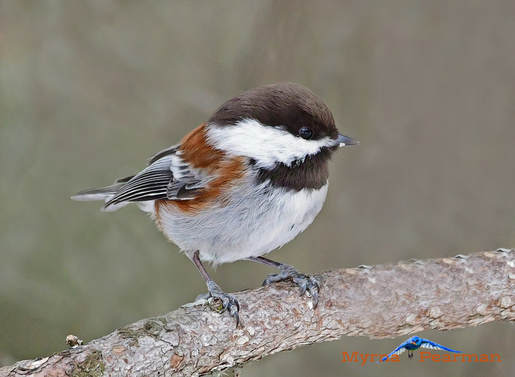 Alberta has four species of chickadees. The most common and abundant species, the Black-capped, is found across the entire province and is a faithful patron at backyard bird feeding stations. The less common and more habitat-specific species is the Boreal Chickadee. This brownish version of the Black-capped prefers coniferous-dominated woodlands so is seldom seen in open or prairie areas. The Mountain Chickadee is well named because its range is restricted to the mountains and foothills. It resembles the Black-capped but is easy to identify because it sports a distinctive white eyebrow. The fourth species, the Chestnut-backed, is a rarity in Alberta. A bird of the west coast, these buff-colored chickadees occasionally nest as far east as the Waterton area. Imagine the surprise among the Alberta birding community when a Chestnut-backed Chickadee photo was posted on Facebook by Tom McDonald of Grande Cache in early January 2018. Up until that point, there were only 15 documented records of this species in the province. Then, on January 7th, three individuals were identified at the feeders of Stan and Keltie Masters near Water Valley. I was lucky enough to be able to see and photograph these birds (shown here). The Masters live in a unique area of the province where all three "regular" species occur. What a thrill it was to see all four of Alberta’s chickadee species all at one feeding station. Who knows where else these chickadees might show up, so be sure to keep an eye on the chickadees that come to your feeders. The four species shown are Chestnut-backed (left) and (below) Black-capped, Boreal, Mountain Chickadee. |
AuthorMyrna Pearman Archives
August 2022
|
|||||||||
Re-posting these images or publishing is not permitted without Myrna's written consent.
Copyright Myrna Pearman Publishing 2024- Site design and maintenance by Carolyn Sandstrom


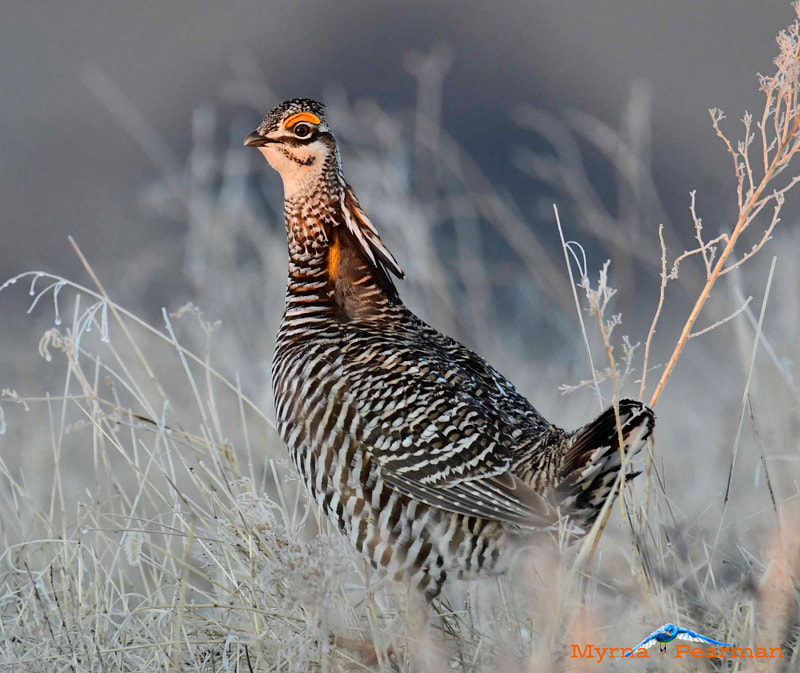



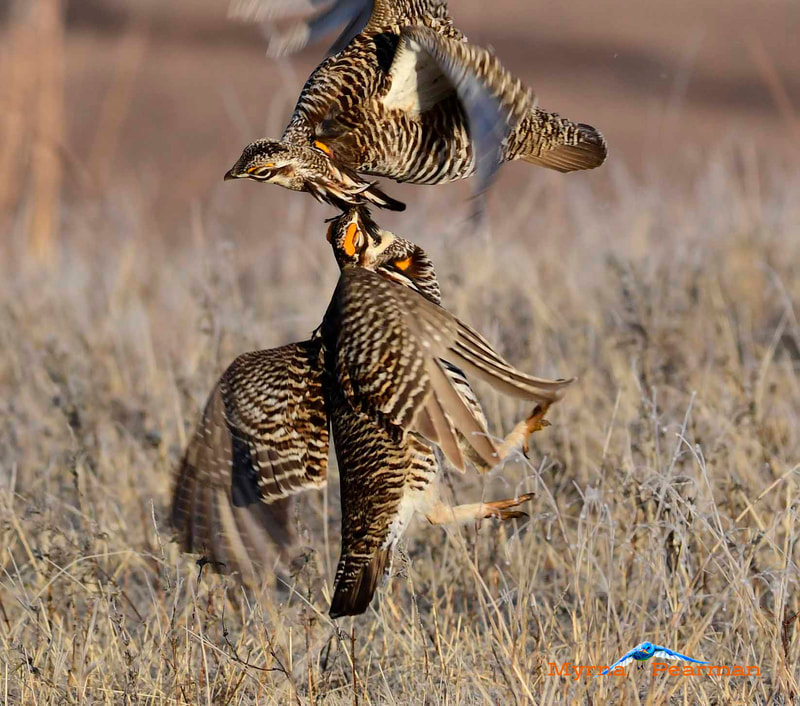
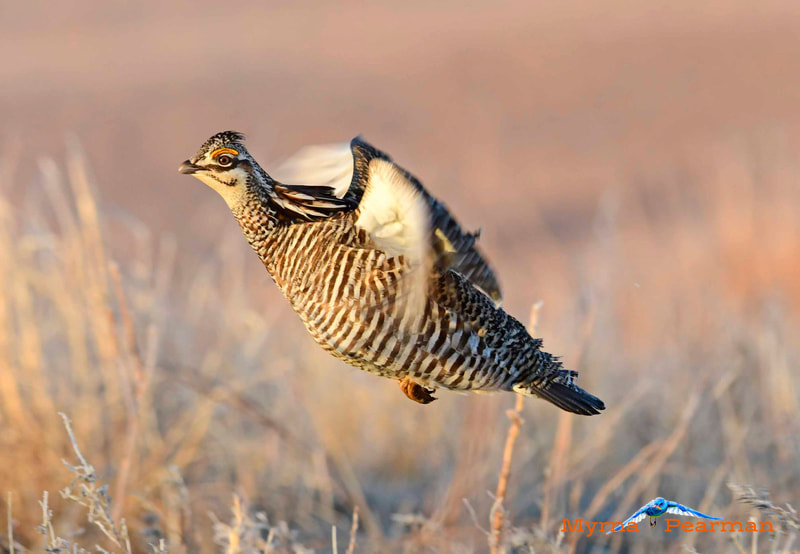









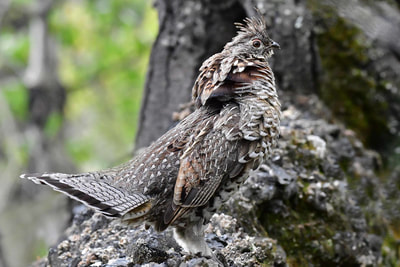





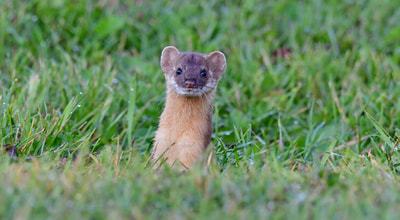



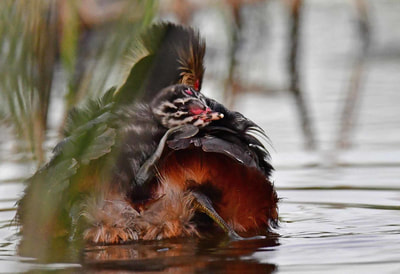







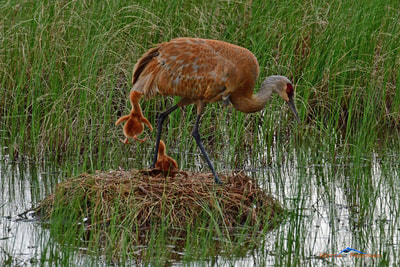



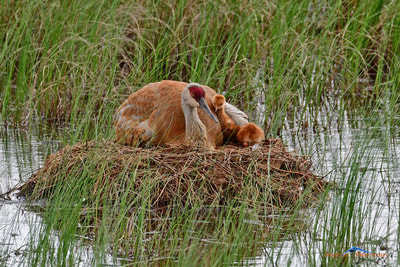
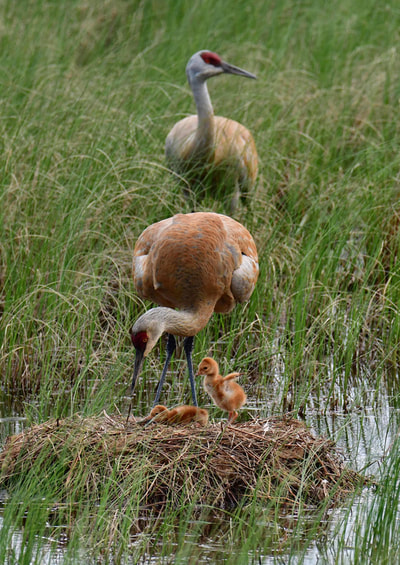








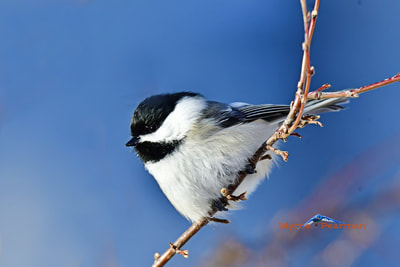


 RSS Feed
RSS Feed



31/3/2020
0 Comments